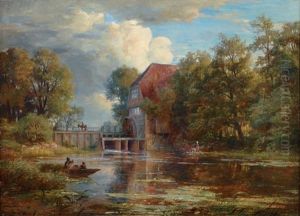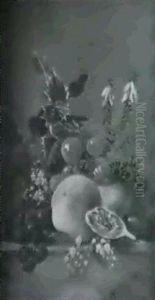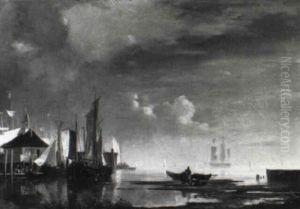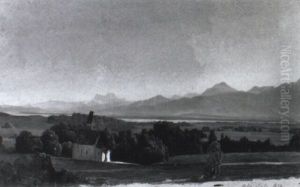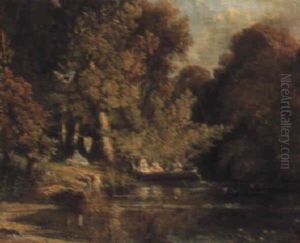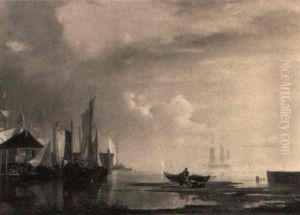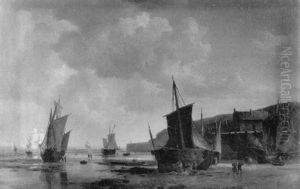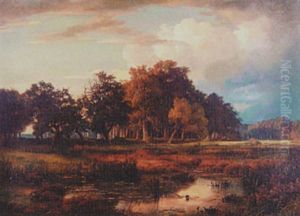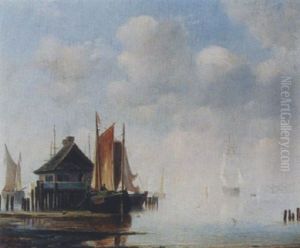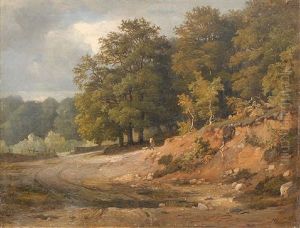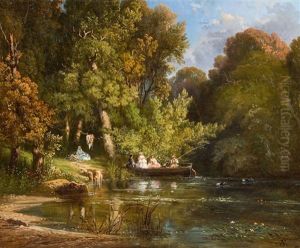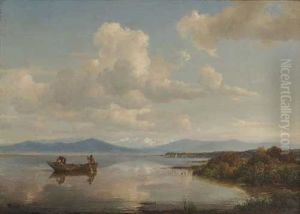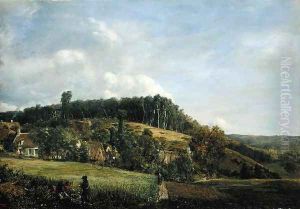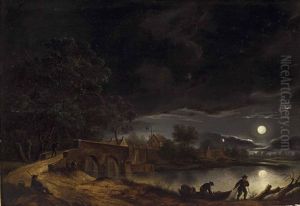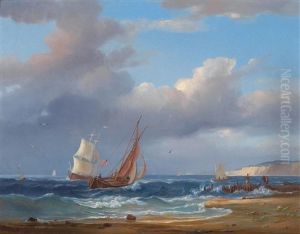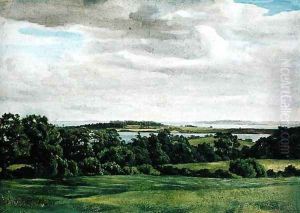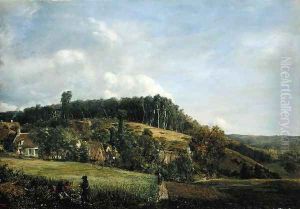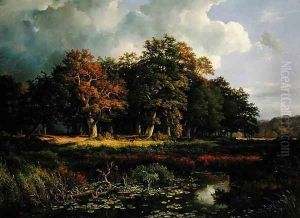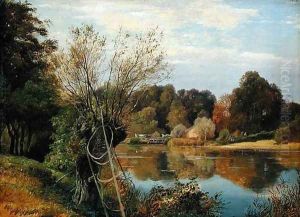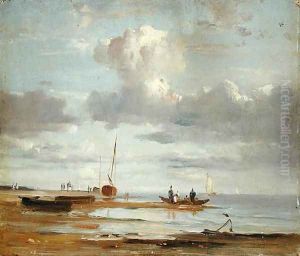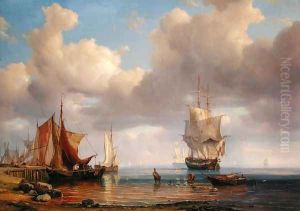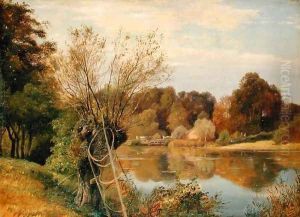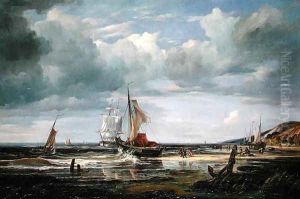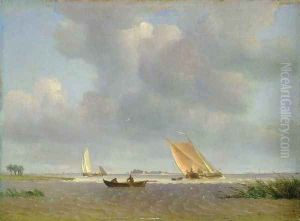Adolf Vollmer Paintings
Adolf Vollmer was a German landscape painter and etcher who was known for his depictions of the German countryside, particularly the marshes and waterways of northern Germany. Born on December 17, 1876, in Hamburg, Vollmer was part of the Hamburgischer Künstlerclub (Hamburg Artists' Club), a group that sought to express a new artistic freedom, departing from traditional academic art to embrace more naturalistic and plein air painting techniques.
Vollmer received his formal art education at the Hamburg School of Arts and Crafts and later at the Munich Academy of Fine Arts, where he was influenced by the work of the French Impressionists, whose approach to light and color had a lasting impact on his own style. He was also inspired by the works of the Barbizon school and the Dutch landscape painters of the 17th century.
After his studies, he returned to Hamburg and became an integral part of the local art scene, contributing to the development of the Hamburg Secession in 1919. Vollmer's work often focused on the atmospheric effects of light on water and the changing seasons, capturing the mood and essence of each landscape he painted. His etchings and watercolors also demonstrate his skill in these mediums.
Throughout his career, Vollmer faced the challenges of the two World Wars and the changing political landscape in Germany, which affected the art community and the reception of art. However, he continued to exhibit his work and gain recognition for his contributions to German landscape painting.
Adolf Vollmer passed away on February 15, 1947, in Hamburg. Today, his work is recognized for its contribution to the development of modern landscape painting in Germany and is featured in various art collections and museums.
